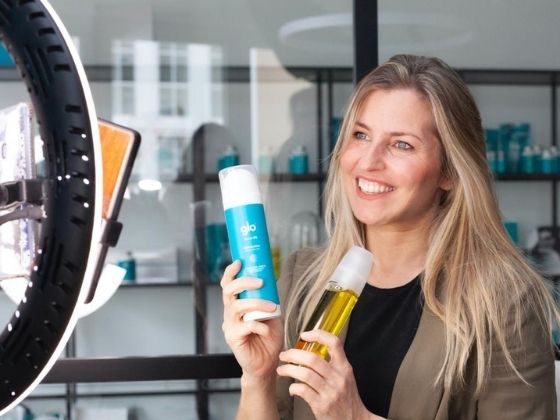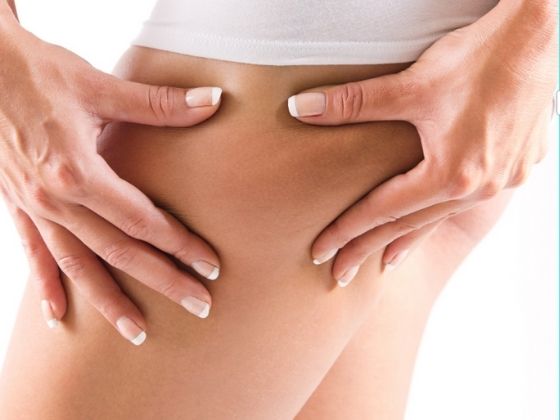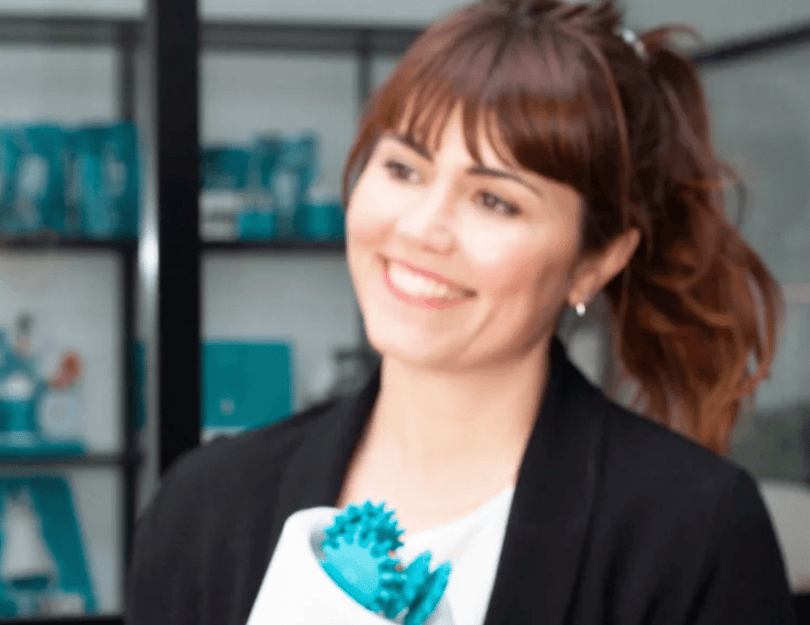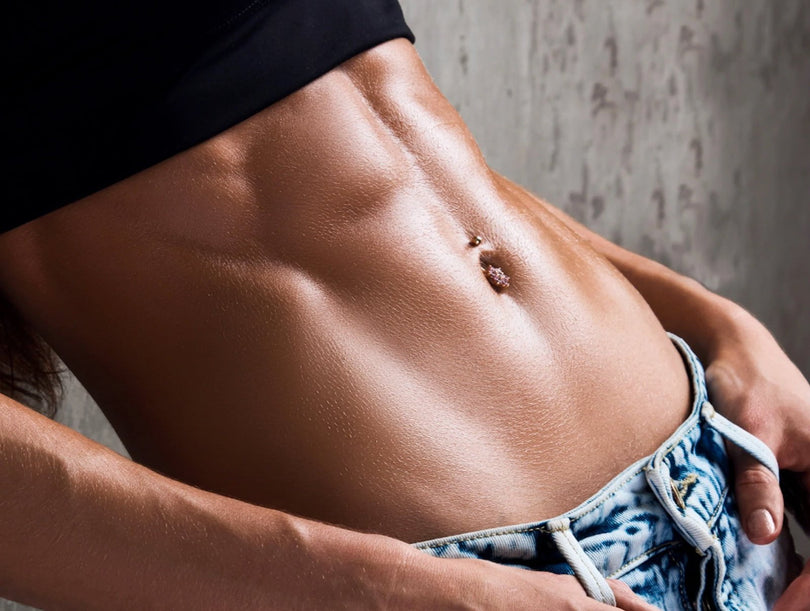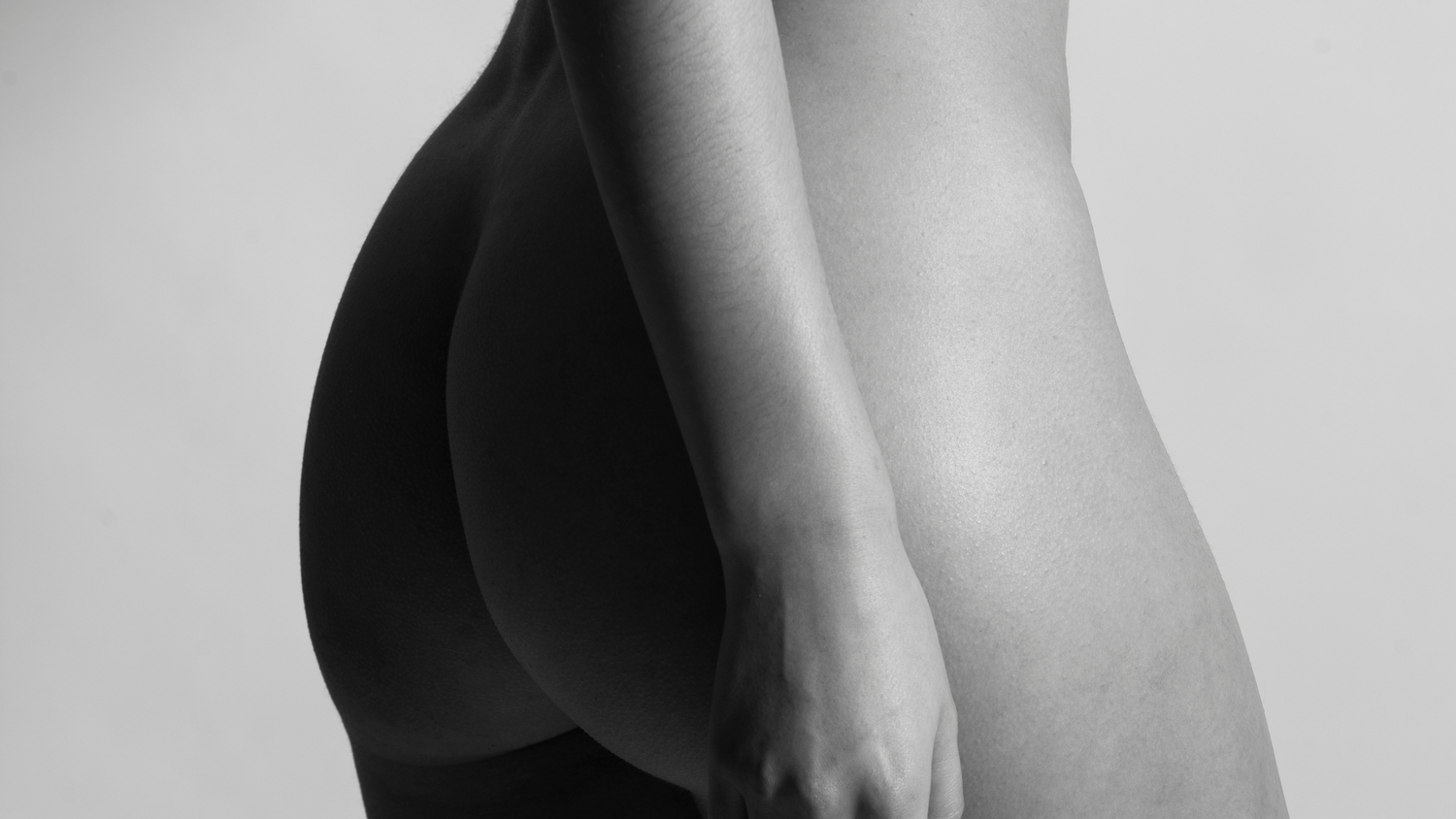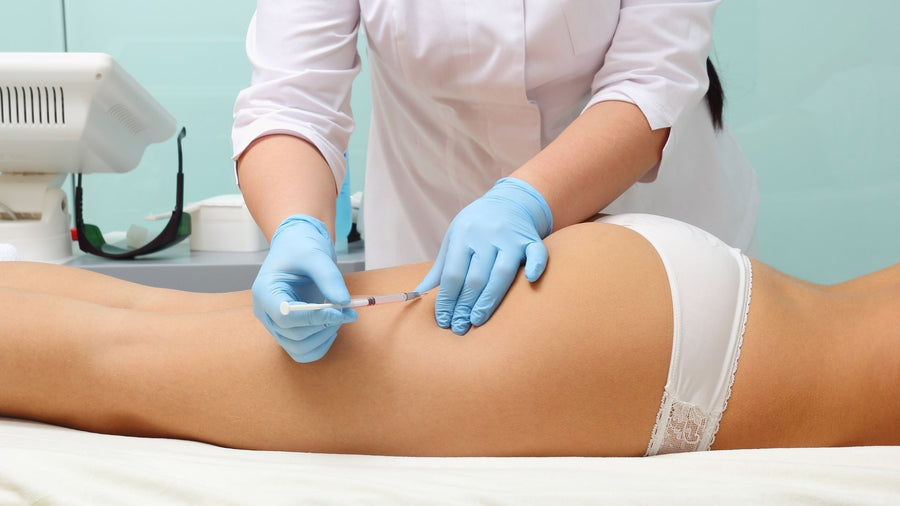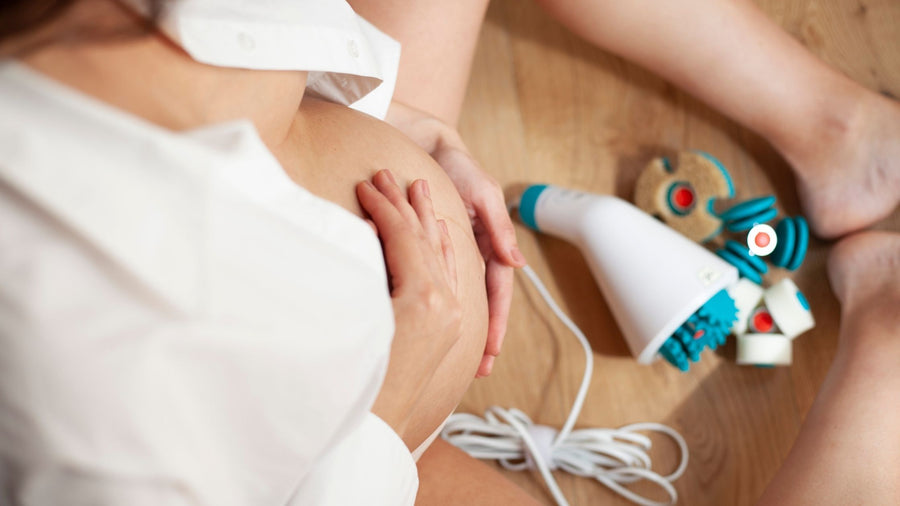Do you think your cellulite is edematous and you don't know how to treat it? We help you to identify and combat this type of cellulite.
If you want to know if your cellulite is edematous and how to treat it, this article can help you.
What is edematous cellulite?
Edematous cellulite is located exclusively in the lower extremities, and features of both soft and compact cellulite can be observed.
The legs become swollen and fattened until they adopt a completely straight appearance, like two columns. In some cases it can be painful to the touch and nodules can be seen, as in cases of soft cellulite.

Are edematous cellulite and soft cellulite the same thing?
The answer is no, although this type of cellulite is often referred to as soft cellulite, but this is not correct. Soft cellulite is the most common of all, and is characterized by extreme flaccidity and a jelly-like appearance. The tissue in this case has no consistency and sinks when touched, and moves with changes in posture. It is usually widespread on the thighs and buttocks, and is not usually painful, although it can produce a sensation of heaviness. It most frequently appears after the age of 40, usually in sedentary women or those who have undergone drastic weight loss changes.
In what areas does it usually appear and what does it usually look like?
The most affected area in this type of cellulite is usually the legs, especially cellulite on thighs and knees, and the legs usually show a columnar, straight appearance.
What symptoms it can cause
Among the most frequent symptoms that edematous cellulite produces in the body are:
- It can hurt to the touch.
- The legs are swollen, giving them a straight appearance.
- There is a lot of fluid retention.
- There is usually a feeling of heaviness in the legs.
- Fatty nodules are usually visible.
How to treat edematous cellulite
There are no magic formulas, cellulite can be prevented, but to suppress cellulite and recover the normal appearance of the skin is a slow process, but possible.
There are no magic formulas, cellulite can be prevented, but to suppress cellulite and recover the normal appearance of the skin is a slow process, but possible.
To solve cellulite you have to make a commitment, there are no quick fixes or magic solutions. The first step is to assume this reality, without constancy, nothing will work.
Cellulite is a progressive disorder, which does not resolve itself spontaneously, it will not disappear miraculously, on the contrary, when it appears it does so with a desire for permanence. The sooner we start treating it right from the beginning if possible, because it will be more and more difficult to solve the problem.
To treat any type of cellulite it is necessary to:
- Suppress the causes. For example, know how to say no to alcoholic beverages, since it has a very direct vasodilator action.
- Acting on the mechanism that produces cellulite, a progressive waterlogging and circulatory disturbance in the area.
- Treat the lesions produced, such as fibrosis.
It requires a 360º action, exercise, diet, local treatments... everything is important and complementary.

Eating habits to help you fight edematous cellulite
If you have a cellulite problem, the consumption of animal fats, carbohydrates or sugars will accentuate your problem excessively.
It is advisable to increase the consumption of legumes, fruits, vegetables and low-fat foods in general.
Also avoid very spicy foods or foods with an excess of salt. Salt is one of the main causes of fluid retention.
Local treatments
The main objective is to reduce fluid retention and its viscosity, because if it is viscous it is more difficult to eliminate. The first "strategic" objective is to reduce the viscosity and then, to drain, to expel that liquid through the lymphatic system, the natural drains of our body.
To drain the liquid we must resort to local massage, such as lymphatic massage or similar, to push the liquid towards all our outlets, veins and lymphatic ducts.
We must also stimulate lipolysis to break down fat, with local application systems and physical exercise.
And finally, treat fibrosis, which forms dimpling and hardening of the nodules.
Practice sport
The practice of some moderate sports activity is basic. It is necessary to tone those muscles where there is an accumulation of fat and do some physical activity at least 45 minutes a day.
Some of the exercises we suggest to fight cellulite are swimming, cycling, dancing, running, paddle tennis or any aerobic exercise routine.
Massage
Within body treatments, massage is a very effective method to treat cellulite, also edematous cellulite; it is a non-invasive procedure with visible results, as long as it is performed properly.
Activation of circulation
The massage produces a direct mechanical action on the tissues, influencing the veins and lymphatic vessels, which in the case of cellulite, are compressed by the hypertrophied fat nodules, which will improve the elimination of toxins.
By activating the circulation, the oxygenation of the tissues is improved, which will improve health by better receiving nutrients and better release toxins.
In addition, it will allow the active substances of cosmetics to penetrate better.

Tissue mobilization
The anti-cellulite massage produces the displacement of the muscular planes, exerting an important mechanical action capable of eliminating the adherences of the anti-cellulite nodules, and achieving the strengthening of the lax tissues (in case of soft cellulite), avoiding this type of flaccidity as much as possible.
Sedative effect
The massage stimulates the nerve endings, relaxing the muscles and a sedation of the nervous system. To achieve the desired effect the massage should be performed according to these rules:
- Always apply in the direction of blood circulation, towards the heart.
- Do not perform abrupt maneuvers.
- It should not produce pain.
- It should not be applied when there are skin conditions (eczema, burns...) or chronic diseases (thrombosis, phlebitis...).
- During pregnancy should not be applied in the abdominal area.
Anti-oedema effect
In the case of edematous cellulite, it is vital to treat edema, for example, with lymphatic drainage massages. This type of massage is very effective in activating circulation and eliminating swelling and fluid retention. However, it is important to put yourself in professional hands, since a bad practice can have the opposite effect.
Treatments such as pressotherapy promote lymphatic function and eliminate nodular fat.
If our body receives more salt than it should, it will retain water and our fluid will be denser (viscous). If we want to avoid edema, it is very important to drain. This is a vitally important issue in the case of cellulite, and even more so in the case of edematous cellulite.

Lymphatic drainage
Lymph is the fluid that surrounds and bathes all the cells of the body, and forms the environment of the cells, which must have a healthy environment to function well.
Lymph is a fluid that circulates slowly through a network of small capillaries called "lymphatics". The frequent stagnation that occurs in the hips and thighs favors the appearance of cellulite.
Manual lymphatic drainage is based on the production of a series of alternative pressures and decompressions and circular movements that are performed on the surface of the skin. It is especially indicated in the treatment of cellulite, offering excellent results:
- It favors the reabsorption and drainage of retained liquids in the connective tissue.
- By eliminating the retained liquids, the waste products resulting from cell metabolism are also eliminated.
- As a consequence of the drainage, the tendency of fibrosis decreases.
- It has an analgesic effect in cases of painful cellulite.
- Promotes relaxation.
Aromatherapy self-massage
It is a solution to be able to apply constancy in the treatment, which we repeat, is key to achieve results in the fight against cellulite, especially edematous cellulite due to its complexity of treatment.
This massage must be VIGOROUS to help eliminate toxic waste from the tissues.
You need anti-cellulite massage oil, such as Glo's Oil910 oil, which has great lipolytic properties and a pleasant aroma thanks to the essential oils. Use about 1 teaspoon for each leg, as it is important to be able to exert some friction for this massage.

Phases of self-massage:
- Frictions: using both hands, start at the ankle and work your way up to the knee and thigh with gentle frictions, which will gradually become firmer and more energetic.
- Kneading: it is like kneading bread. Take an area of skin, squeeze and apply as much pressure as you can bear without bruising the area, and continue kneading with the pads of your thumbs.
- Rotation: Take 2-3 cm of thigh flesh and rotate it between the fingers and thumb.
- Strong rubbing: Finish with long and gentle movements as in the first phase.
If you find it difficult and hard for your hands to perform the self-massage all over your legs and buttocks, nowadays, you can help yourself with machines designed to reproduce all these movements much more effectively and effortlessly, such as the awarded Glo910 anti-cellulite massager wich already helped to thousands of women arond the world.

The self-massage should end with a lymphatic drainage, for any type of cellulite. The incorporation of essential oils and lymph transport activators greatly enhances the effects of conventional drainage.
You can use the awarded ultra concentrated Serum910 to reduce edema and improve Glo's venous and lymphatic circulation.

Dry skin brushing
It is an ancient technique that helps to improve the condition of the skin, removing dead skin cells from the surface, while stimulating lymphatic drainage.
The brushing should be done gently, best before showering. Start with the feet and work your way up the back and front of the leg, the buttocks, always towards the heart. Then, brush the abdomen in a circular motion in a clockwise direction.
It does not require more than 5 minutes, and after the shower, the ideal is to apply an anti-cellulite and nourishing oil for the skin.

How to avoid fluid retention
As we have explained, it is very important to avoid fluid retention, especially important in edematous cellulite very affected by this problem.
Take note of these recommendations that will help you avoid swollen legs due to fluid retention:
- Drink plenty of water (preferably outside of meals, 2 liters).
- Do not drink coffee if you have cellulite.
- Cut out salt.
- Try to drink diuretic infusions: e.g. 14 DAY Express Program Bio Tea (not yet available in the USA).



